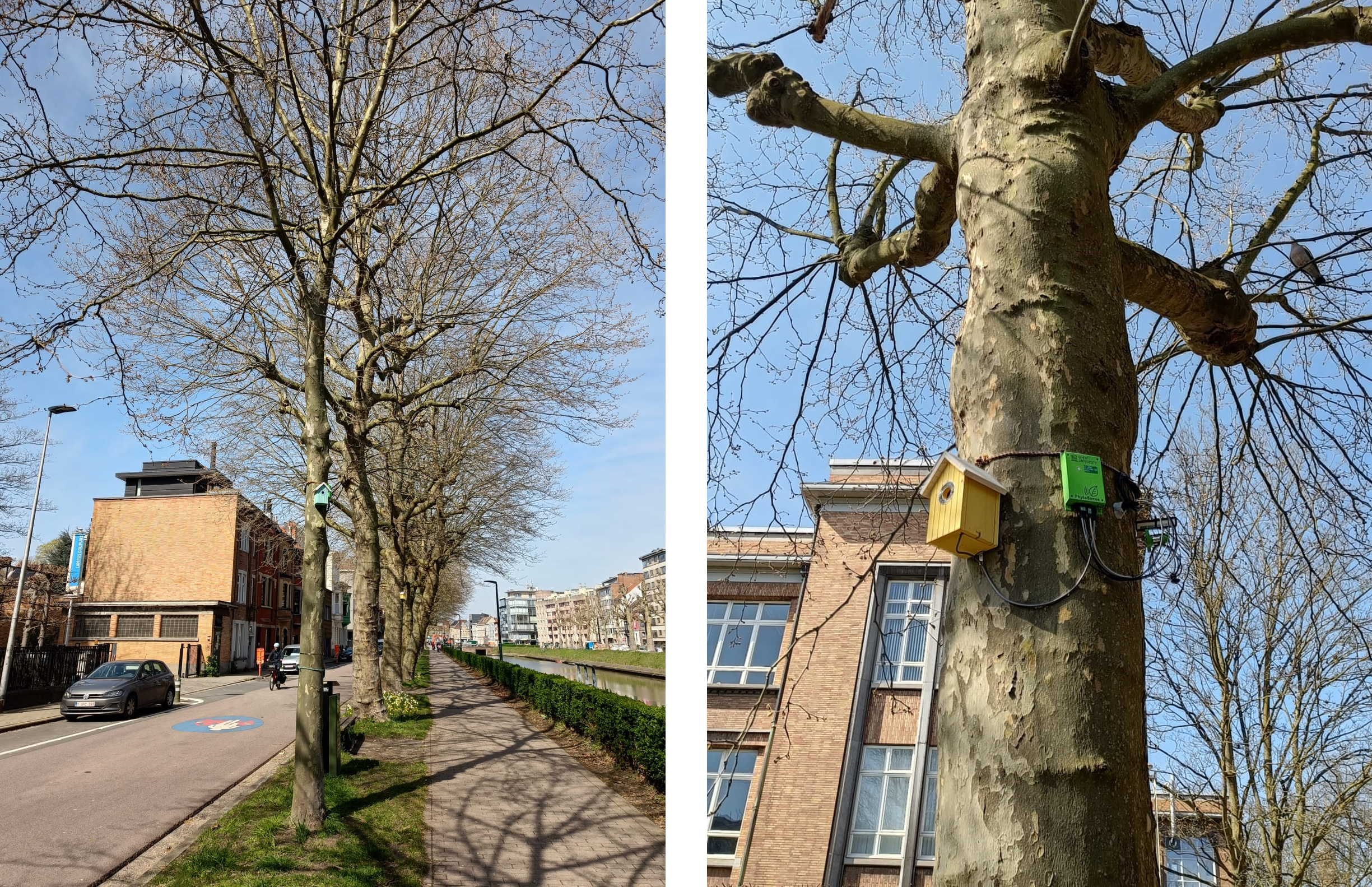Ghent
Relevance of green stem tissues
The relevance of green stem tissues to the hydraulics of urban trees is studied in a cooperative project between the Laboratory of Plant Ecology (Ghent University) and the Department of Botany (University of Innsbruck). Monitoring sap flow and growth of trees in Ghent and Innsbruck will enable us to compare the hydraulic performance of urban trees under natural drought and winter stress in a temperate versus alpine climate.

Urban trees provide manifold services. They structure urban environments and nowadays come to the attention because they store carbon, improve air quality, and mitigate heat island effects. However, standing in an urban environment, these trees are exposed to intense stress, such as restricted rooting space, heat, and salt stress. These stresses impact tree hydraulics, namely the water transport from the roots to the crown, which is known to be crucial for tree vitality.
Upon drought and frost and thaw, air bubbles are known to appear in the water-transporting vessels (xylem) of the tree. This process is called embolism formation. Once bubbles are present in these vessels, they are no longer available for water transport, thereby disabling the tree’s hydraulic system. Green, photosynthetic tissues in stems are suggested to support water transport functions and to help avoid and repair this critical bubble formation.
Since April 2023, six plane (Platanus x acerifolia) trees are being monitored with sap flow sensors and point dendrometers. This species was chosen because of its high abundance in big cities and its feature of shedding bark, thereby exposing green stem tissues, most likely contributing to growth and hydraulic function.
Tree location
The monitored trees are situated at Coupure Links in Ghent, in front of the faculty of Bioscience Engineering. The satellite image below shows the exact location of the monitored trees.
